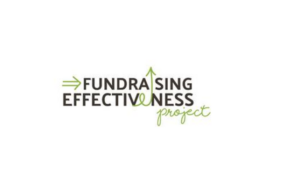Project HOPE was facing a fate not becoming of its name a few short years ago, a product of short-term thinking and aversion to risk. The organization focused on metrics such as fiscal year and net revenue as opposed to retention rates and year-over-year growth. Direct mail was relied on almost exclusively and extreme list rental practices resulted in the Millwood, Va. organization’s file being turned over 9 million times over the course of 18 months.
According to Jann P. Schultz, senior director of integrated fundraising at the organization, the donor base shrunk accordingly, from 146,683 in 2005 to 72,733 in 2013. Three years later, Project HOPE is rebounding. During their presentation, “From Circling the Drain to Soaring the Skies: An Inside Look at the Turnaround of a Fundraising Program” at DMA’s 2016 Washington Nonprofit Conference, Schultz and Jeff Brooks, creative director of TrueSense Marketing in Freedom, Pa., detailed the organization’s comeback.
Step 1: Leaders started thinking about tomorrow. The year-to-year focus that had dominated the organization for many years was replaced with a more future-emphasized approach.
Step 2: Offers. Project HOPE’s leaders realized that offering donors something specific to do with their money yielded best results. The shipping of donated medical supplies was identified. Then a multiplier model was emphasized. In essence, a $1 donation can compound to $105 worth of supplies shipped to those in need. In the case of vaccines, Project HOPE has highlighted that a $1 can help ship 1,000 and 2,000 times its value in preventive medicine.
Step 3: A change in tagline. “Founded in 1958” was replaced with “Your Generosity Multiplied. Always” for donor communications. A video explaining the organization’s multiplier model was created and a money-back guarantee, more typically found in the retail market, was rolled out.
Step 4: Diversifying channels beyond direct mail. Many of Project HOPE’s direct-mail initiatives were given digital counterparts. How donors might evaluate humanitarian charities was discovered to be a popular search engine question, and Project HOPE developed a web page dedicated to providing answers and highlighting the organization’s merits. Similarly, an e-book entitled “The Practical Hero’s Guide to Saving the World” was produced and made available to those providing their name and contact information. Project HOPE also solicited supporters on the radio, an effort that helped secure donors between the ages of 45 and 60 with an average donation of $90.
Step 5: Donor services were improved. Communications such as newsletters changed the emphasis from the organization to the donor. A feedback loop was initiated to help capture and assist donors. Following the earthquake in Nepal, for instance, prospective donors complained that Project HOPE did not have a PayPal link on its website. A link was soon created and emails were sent to those that complained thanking them for raising the issue and informing them that the issue had been corrected.
Step 6. The list exchange was normalized. Following the massive amount of turn over, the list was taken off the market. Schultz is now working with Project HOPE’s board of directors to potentially revisit making the list available in the future.
Step 7. Educating the organization’s community. The efforts have proved worthwhile. From 2013 to 2015, Project HOPE’s donor base increased from 72,733 to 103,244. Without providing specific figures, Schultz added that Project HOPE has increased its number of gifts by 27.5 percent, gross revenue by 27.4 percent, annual value per donor by 14 percent and donor retention by 7.2 percent during that same time.










